It’s early afternoon in Sara Martinez’s snug Queens apartment, soft light streaming in through the floral curtains, and the buzzer to 4B is ringing incessantly.
Soon, I have lost track of the nieces and nephews, brothers and sisters, cousins and friends who have piled into Martinez’s home, distracted as I am by what’s happening on the stove. On one burner, a truly massive pot of plantains is coming to a boil in salted water while a knot of women gathered around the dining table peel more with a few practiced tugs of the hand. On another burner, Martinez, the 68-year-old family matriarch, fries up fresh kingfish and golden pomfret, procured from the Korean grocery store and rubbed down with a homemade adobo seasoning. On the third, she’s thrown cinnamon sticks into simmering water, intended to ward off the smell of fried fish that would inevitably overwhelm the cramped quarters if allowed to go unchecked.
I’m here to witness the creation of hudutu, a stew of fish and shrimp that swims in a savory, flavorful coconut broth and is always served alongside a ball of mashed plantains.

Hudutu is served all over Central America, but it is a signature of the Garifuna people, the descendants of native Caribs and displaced West Africans whose harrowing history left them uprooted and wandering the Americas for the last 200 years. Although Garifuna communities are still scattered across Nicaragua, Honduras, Guatemala, and Belize, in the last few decades, many have come to seek their fortunes in the big metropolises of the United States. Today, some 200,000 are estimated to live in and around New York.
I was under the impression that Isha Sumner, Sara’s daughter, had invited me to her mom’s kitchen for an intimate cooking demonstration. To my surprise, I now find myself in the midst of a raucous Garifuna celebration.
Well, duh, Sumner tells me. There’s no hudutu without a party. “We are about family, we are about people, we are about groups getting together and hammering it out in the kitchen,” she says. “It’s not supposed to be a lonely experience.”
As preparations get underway, a cacophony of noise rises from the kitchen, three languages—English, Spanish and Garifuna—being spoken with increasing volume and velocity. The chatter is interspersed with delighted hoots when someone, usually Mama Chona, a longtime family friend, shares a particularly funny anecdote about the highs and lows of being Garifuna.
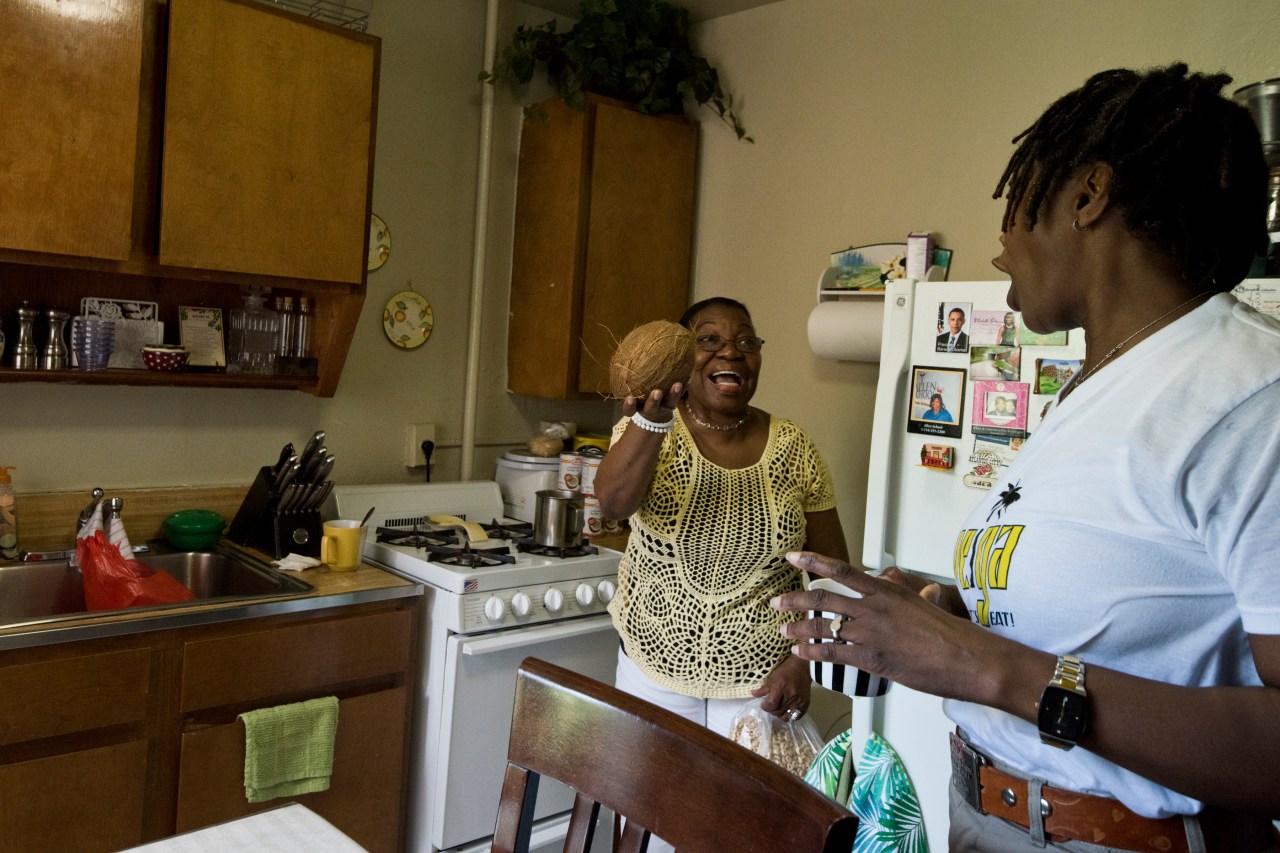
Until a few years ago, Mama Chona says, she had no idea her son could speak their ancestral language, one that shares some commonalities with French but is so deliciously expressive I’m told it’s the ideal vehicle for gossip. All his life, Mama Chona spoke to her boy in Garifuna. He answered back in Spanish. That is until one day, he went to pay his respects to his grandmother on the anniversary of her death. Speaking to her, Garifuna poured forth.
“You speak Garifuna? All this time?” Mama Chona shouts, laughing at the memory. “I wanted to punch him in his face.”
The question of how to sustain and honor their culture seems a particular preoccupation for the Garifuna, even more so than other first and second generation immigrants. “That’s all we’ve got,” Mama Chona says.
This is the origin story, likely apocryphal, that the Garifuna have passed down for generations: Sometime in the 17th century, a slave ship bound for the New World was shipwrecked in the Caribbean. The survivors swam to the shore of St. Vincent and the Grenadines, where over the ensuing years, they intermingled with the native Arawaks, Caribs and escaped slaves to become the Garifuna.
From here, their history becomes less the stuff of legend. The Garifuna thrived in the Caribbean, fishing, growing cassava, and fiercely resisting the yoke of European colonialists. But in 1797, the British finally wrested control of St. Vincent and they forcibly expelled the Garifuna from their homes. They were deported to the barren island of Balliceaux, where scores perished from disease and starvation, and then shipped off to Roatán, an island off the coast of Honduras. From there, the lucky few that managed to survive moved to the mainland and fanned out across Central America.
“The backbone of the Garifuna is the fact that we were exiled from St. Vincent and left to die in the sea, but we didn’t,” Sumner says. “We’re still feeling nostalgic, we’re still feeling displaced, we’re still looking for who we are within ourselves and trying to find our home.”
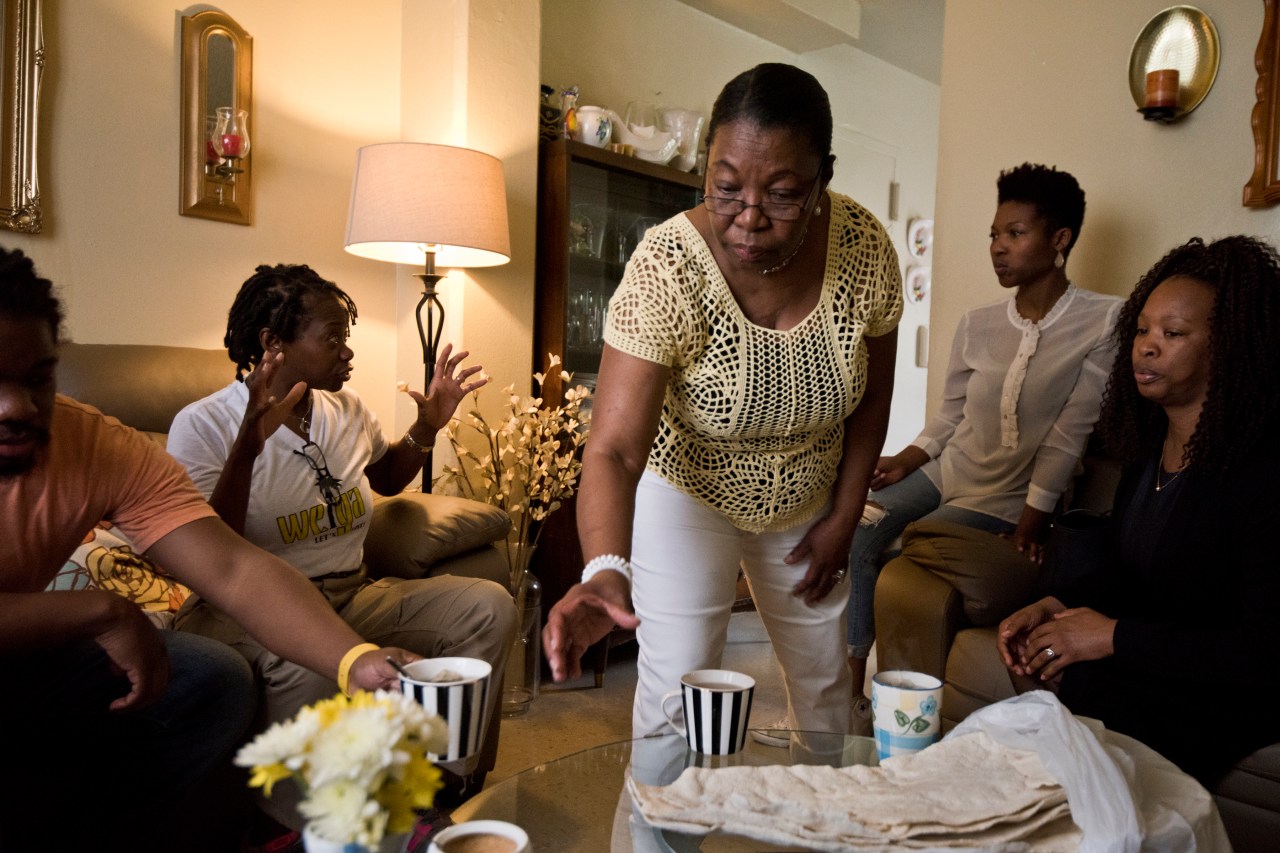
Maybe it was that genetic predisposition to restlessness that prompted Martinez to wake up one morning in her village in Honduras with a longing for something better than the life she was given. On March 20, 1979, she made the treacherous journey across the Rio Grande on the U.S.-Mexico border by boat, terrified both of drowning in the open water and being caught by border police. “I never forget the day. I have it like a movie in my mind.”
“No papeles,” she says. “But God is good.”
“And Trump is bad,” Mama Chona interjects.
Settling in Houston, Martinez worked as a housekeeper and babysitter. Having left her four daughters behind in Honduras with relatives, she was determined to gain legal status and save enough money to bring them to the United States.
“Oh my god, [I was] miserable to be honest,” she says. “I would think all the time, ‘How are they? Do they having something to eat?’ And here I am trying so hard. When will they come? What day will it be?”
In the early 1980s, with the help of the family she worked for, Martinez successfully applied for a green card; her eldest daughters arrived in 1985. Ten years later her youngest two followed and the family settled in New York.
Thinking of those lonely early days, Martinez says gathering around Garifuna food helped sustain her. So did throwing fedus, festive Garifuna gatherings where the women sing and dance in kaleidoscopic, floor-length dresses with the accompaniment of drums.
Now, almost 40 years later, as Garifuna music begins to pump through her apartment, Martinez’s hips begin to swivel. Her face cracks into a wide smile, as her children and grandchildren egg her on and the party grows more boisterous.
“Finally, my family’s here, everyone is a citizen of the United States and I thank God because, without him, I don’t know,” she says.
According to Garifuna custom, when the plantains and green bananas are sufficiently tender, a man is typically given the task of beating them into submission. This time, it falls to Milton Guity Jr., a family friend, and Garifuna documentarian. He sits in front of an ornate wood-carved hana, a kind of life-size mortar, and uses his whole body to pulverize the mixture with a long wooden stick, rhythmically slapping it down on the bowl every few seconds.
Thud. Thud. Thud. It’s the sound of midday in Honduras, Sumner says.
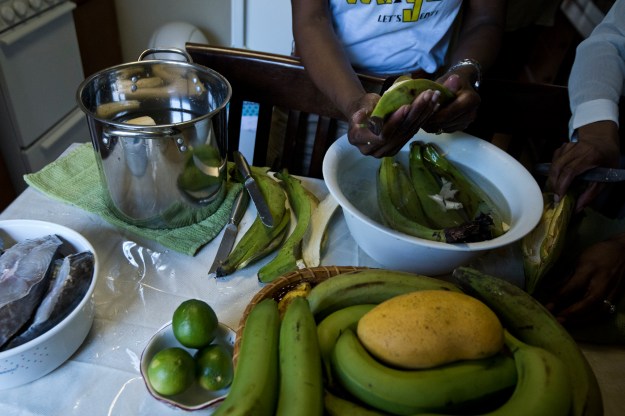
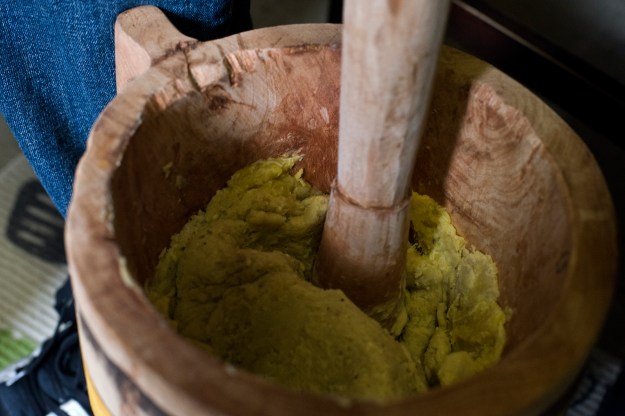
Meanwhile, chopped red and green bell peppers soften in a pot of simmering coconut milk laced with adobo and cumin, along with generous fistfuls of basil and culantro. When the flavors have had time to meld, shrimp are quickly poached in the soup before it’s ladled into generous-sized bowls with a piece of fried fish in each. Scoops of the mashed plantains are taken straight from the hana and placed in the center of the table for sharing.
Finally, there’s a hush in the apartment. We’re all crowded around the dining room table, some standing, some sitting, blissed out and slurping our hudutu, scooping up every last dreg with the sweet mashed plantains and spitting out fish bones as we go.
“This is the only time that Garifuna people get quiet,” Mama Chona says, chuckling.
Sumner wants to remember these stories and these experiences, and to pass them on to her own children. They now live in Cape Cod, where the Garifuna community is significantly smaller.
To that end, for the last few years, she’s been chasing her mother around the kitchen with measuring cups and spoons (of which Martinez has no use), determined to commit the family recipes to paper. She and Guity Jr. are shuttling back and forth to Honduras, talking to family members and villagers about how to prepare other Garifuna staples. They hope to finish a cookbook later this year. It will be called “Weiga”—Garifuna for “let’s eat.”
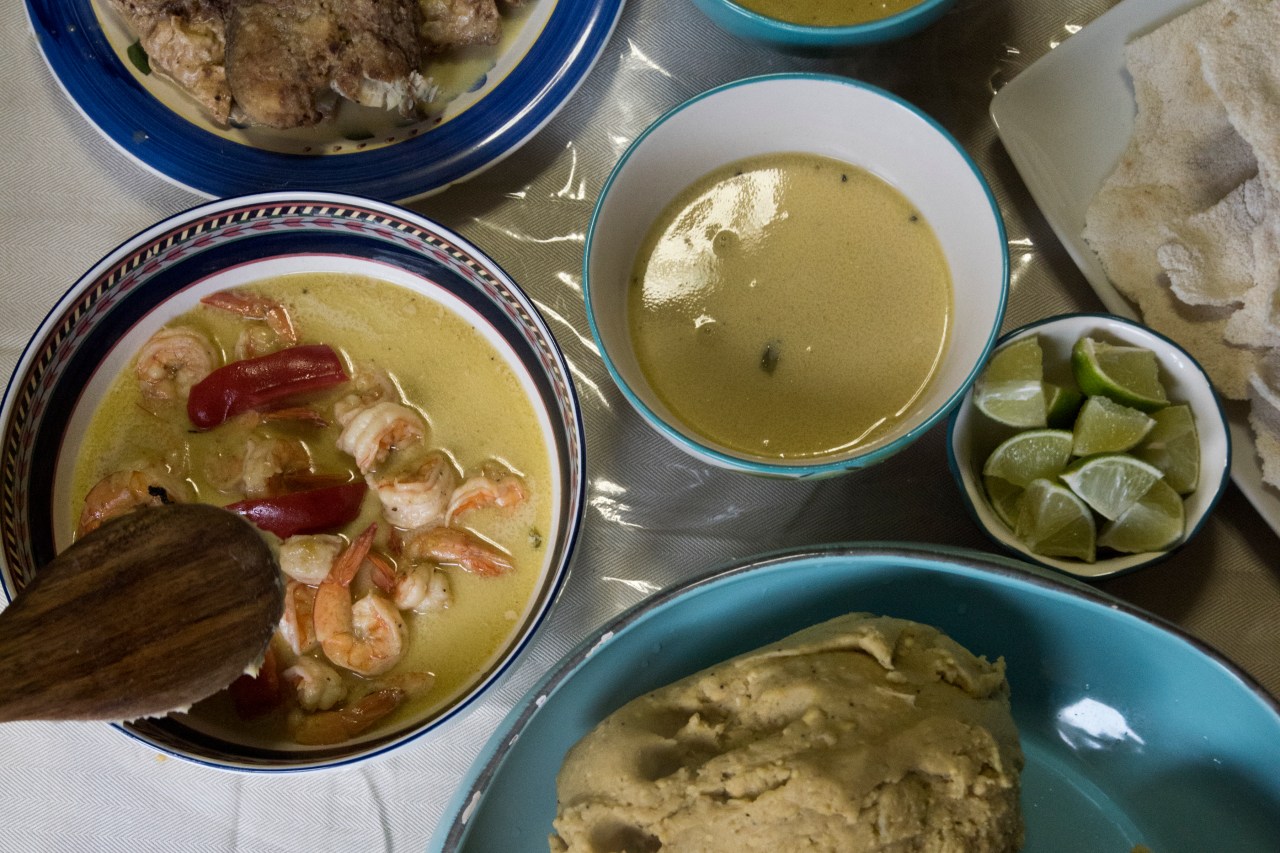
“In America, if you don’t hold on to what’s yours you’re gonna lose it,” Sumner says. “You’re going to end up with something that’s not nearly the same as what you grew up with or that your grandmother taught you.”
The cookbook will feature an array of dishes, from savory stews to coconut porridges to accidentally vegan breads. But of all of their rich culinary traditions, hudutu is perhaps the best to showcase the many miles the Garifuna have traveled, the ways in which they’ve endured and managed to hold fast to pieces of themselves wherever they went. The many-layered soup is reminiscent of the days they spent in the Caribbean islands, fishing and learning to do astonishing things with the coconut. The mashed plantains are a nod to the fufu of West Africa, the home of their ancestors.
Seen in that light, every batch of hudutu conjured up and shared in a Queens apartment feels like a minor miracle.